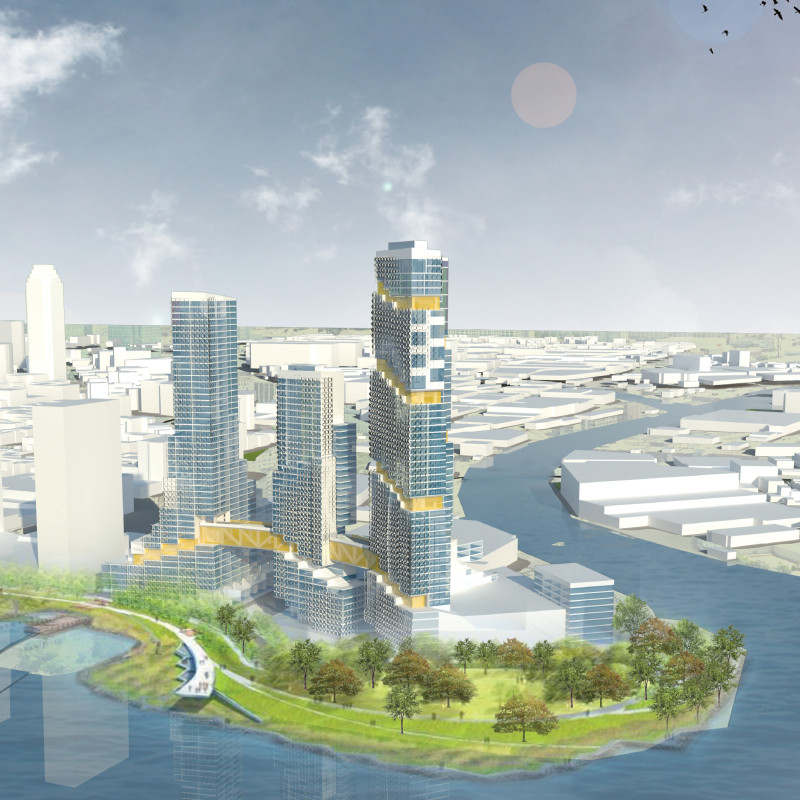5 key facts about this project
Functionally, the project serves as a multifaceted residential complex that prioritizes both private and communal spaces, facilitating interactions among residents while allowing for personal privacy. This balance is achieved through innovative design features that include the integration of versatile living spaces and distinctive architectural elements that encourage social engagement. Key design components, such as the Air Bridge and the Magic Wall, showcase the project's commitment to modern urban living.
The Air Bridge is an elevated structure that connects different high-rise units, effectively linking various floors while providing a unique vantage point for residents to experience their surroundings. It serves a practical purpose by enhancing vertical mobility and encouraging social interaction, allowing for a more engaging living experience. The design of this bridge promotes interactions not only within the individual residences but also between neighboring structures, contributing to a cohesive urban fabric.
The Magic Wall is another transformative feature of the project, enabling flexibility in the arrangement of living spaces. This innovative approach allows residents to easily combine or isolate units according to their needs, adapting to different family sizes or housing situations. Such modularity aligns with contemporary housing trends, reflecting an understanding of the evolving nature of urban demographics and the necessity for adaptable architectural solutions.
Materiality plays a significant role in this project, with a focus on sustainable choices that harmonize with the surrounding environment. The use of Active Auxetic materials for the building's facade provides a dynamic and responsive characteristic, enabling the architecture to regulate light and temperature effectively. This adaptability contributes to energy efficiency, reducing the overall carbon footprint of the structure. The concrete framework offers durability, while transparent glass facades invite natural light and provide residents with visual connections to the exterior landscape.
The inclusion of green integration within the design further enhances the project's appeal. Vertical gardens and terraces not only improve the aesthetic quality of the living spaces but also contribute to biodiversity and ecological sustainability. By incorporating native plant species and organic materials, the project reclaims urban spaces for nature and promotes a healthier living environment for residents.
The community-centric approach of Ongoing Acclimation emphasizes the importance of shared spaces, fostering a vibrant atmosphere where residents can engage with one another. This focus on social connectivity, coupled with architectural strategies that encourage interactions, aligns well with modern urban living patterns. It offers a framework for future architectural developments to reconsider how spaces can be designed to support community well-being.
Through thoughtful considerations of adaptability, functionality, and sustainability, Ongoing Acclimation exemplifies a holistic response to urban living challenges. Each design element contributes to a cohesive architectural narrative that prioritizes both the individual's needs and those of the broader community.
For those interested in delving deeper into this project, exploring the architectural plans, sections, and designs will provide valuable insights into the thoughtful details and unique ideas embedded within this urban architectural endeavor.


























